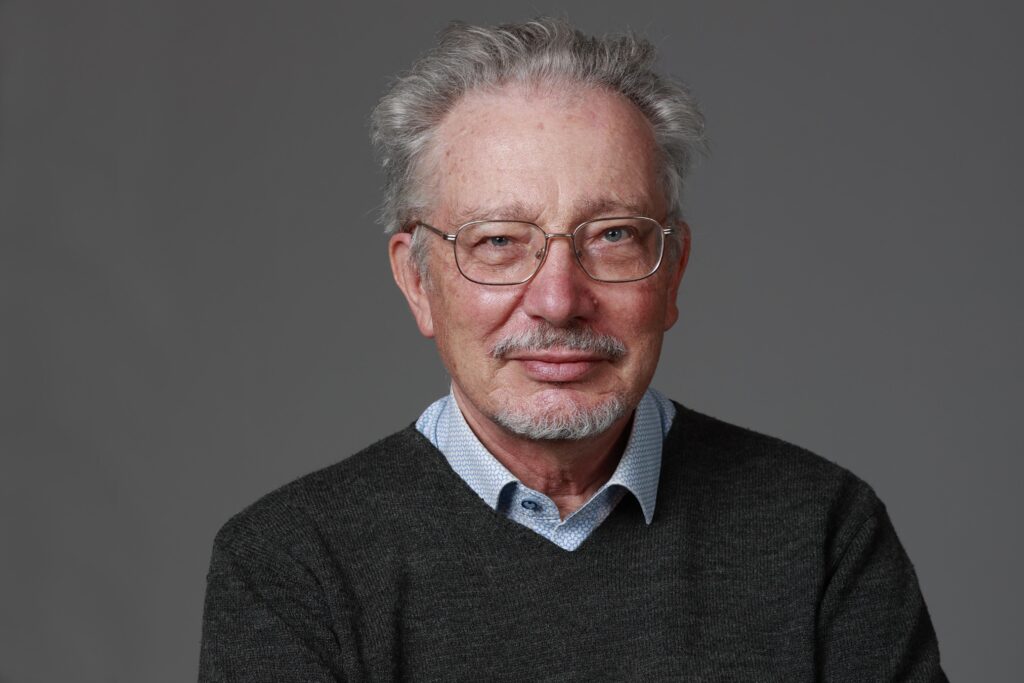The brainers

Jean-Paul Delahaye – Mathematician and computer scientist
Jean-Paul Delahaye is Professor Emeritus at the University of Lille and a researcher at the CRISTAL laboratory (Centre de recherche en informatique signal et automatique de Lille), part of the CNRS. His work focuses on sequence transformation algorithms (Thèse d’Etat), the use of logic in artificial intelligence, computational game theory and algorithmic information theory, with particular applications to finance. He is the author of some fifteen books, including ‘Merveilleux nombres premiers’, ‘Inventions Mathématiques’, ‘Jeux finis et infinis’ and ‘Au delà du Bitcoin: dans l’univers des blockchains et des cryptomonnaies’. In 1998, he was awarded the Prix d’Alembert by the Société Mathématique de France and, in 1999, the Prix Auteur de la Culture Scientifique by the French Ministry of Education and Research. He writes the monthly column ‘Logique et calcul’ in the journal Pour la science.
This brainer takes part in round-table discussions, offers improvisation sessions and the following solo talks:
Strategies for cooperation
Game theory enables the study of cooperative games, producing precise and often surprising results. The “prisoners' dilemma” is a simple model that leads both to unexpected theoretical results (sometimes considered paradoxical), and to the identification and selection of effective collaborative strategies, including the famous “give-and-take”, using computer simulation tools. Practical lessons are drawn from these studies, in other words, advice on how to interact effectively with an unknown partner with whom one must choose whether to trust or, on the contrary, act with caution and mistrust.
Cellular automata and the game of life
The living world is complex. Yet it is made up of a limited number of chemical elements that interact according to simple laws. How can simple objects obeying simple rules generate rich and unexpected behavior? Thanks to computers, we're studying this question, and what we discover amuses and amazes. The model of cellular automata, and the particular case of John Conway's “Game of Life” (created over 40 years ago) help us to understand this emergence of structured beings. This highly visual lecture shows the coordinated evolution of configurations sometimes comprising billions of cells. A playful introduction to the ideas of computational complexity.
Graphic and logical paradoxes
Paradoxes are sometimes the result of errors that need to be corrected. In other situations, they force us to develop new concepts and tools. Paradoxes are extremely useful in mathematics, and are the source of major progress. But solving them is a game! We'll use examples to illustrate different types of paradoxes, with a particular focus on graphical and logical paradoxes. Main paradoxes covered: impossible figures, Curry's geometric paradoxes, Mona Lisa's paradox, Simpson's statistical paradoxes and false calculations.
Bitcoin, cryptocurrencies and blockchain
In 2008, a new way of thinking about money was put forward, challenging old ideas about this institution. As with e-mail and the Internet, which are not in the hands of any authority and thus lead to greater appropriation of information by all, and to new democratic practices, it seems that, in the monetary sphere, everything could function without a central controlling authority. Bitcoin is the first version of this new type of digital currency. It is based on the use of a peer-to-peer network and several cryptographic primitives. Still in the experimental phase, it is the subject of much criticism, as well as being a notable success. How does it work? What is a blockchain, on which bitcoin is based but which can be used for many other things? What are we to think of these new currencies based on advances in mathematical cryptography?
The art of three-dimensional fractal shapes
No one doubts that the geometrical and decorative Islamic motifs admired at the Alhambra in Granada or the Palais de la Bahia in Marrakech are the result of the work of great artists. Today, new forms of geometric art exist, and it's one of them that we'd like to present: three-dimensional fractal art. Fractal art was born around ten years ago, and features static images, sculptures and films. Based on mathematics, its aim seems exclusively aesthetic. Mathematically, cinematographically, but also sociologically, we are in the presence of a new and disturbing world. Some will consider it too abstract and disconnected from any historical, political or human reality. This may well be true, and it makes the approach tricky for those who discover this baroque profusion of evolving forms from the outside. Nothing seems to justify them, except the complex, jagged harmony that subjects our eyes and minds to a profusion of images so strange that we perceive them as coming from a world of machines rather than as the result of human will. We will attempt to explain the mechanisms and reasons behind this art born of calculations and mathematics.
Chance and the computer
Producing randomness with a computer is useful for game programming, simulations and all kinds of other purposes: images, tests, secret codes and so on. It's a tricky business, and many pitfalls persist despite over fifty years of work in the field. In cryptography, the requirements are different from those encountered in modeling, but recent progress has led to a better understanding of chance in general, and how to obtain and approach it. A third kind of randomness has also been identified thanks to Kolmogorov's complexity theory. This third kind of randomness, found in the decimals of Gregory Chaitin's omega number, is particularly troubling and almost paradoxical in its links with the deepest aspects of mathematical logic (Gödel's incompleteness).